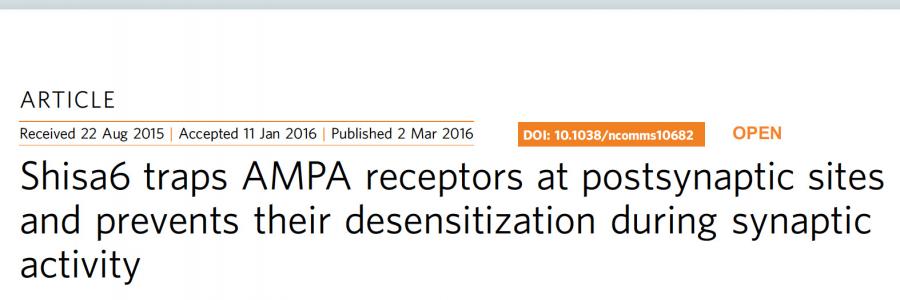
Remco Klaassen’s and Jasper Stroeder’s work on the AMPA receptor auxiliary subunit Shisa6 appeared in Nature Communications
The study is the result of a collaboration between the labs of Guus Smit, Daniel Choquet (Bordeaux) and our lab. Trafficking and biophysical properties of AMPA receptors (AMPARs) in the brain depend on interactions with associated proteins. We identify Shisa6, a single transmembrane protein, as a stable and directly interacting bona fide AMPAR auxiliary subunit. Shisa6 is enriched at hippocampal postsynaptic membranes and co-localizes with AMPARs. The Shisa6 C-terminus harbours a PDZ domain ligand that binds to PSD-95, constraining mobility of AMPARs in the plasma membrane and confining them to postsynaptic densities. Shisa6 expressed in HEK293 cells alters GluA1- and GluA2-mediated currents by prolonging decay times and decreasing the extent of AMPAR desensitization, while slowing the rate of recovery from desensitization. Using gene deletion, we show that Shisa6 increases rise and decay times of hippocampal CA1 miniature excitatory postsynaptic currents (mEPSCs). Shisa6- containing AMPARs show prominent sustained currents, indicating protection from full desensitization. Accordingly, Shisa6 prevents synaptically trapped AMPARs from depression at high-frequency synaptic transmission.